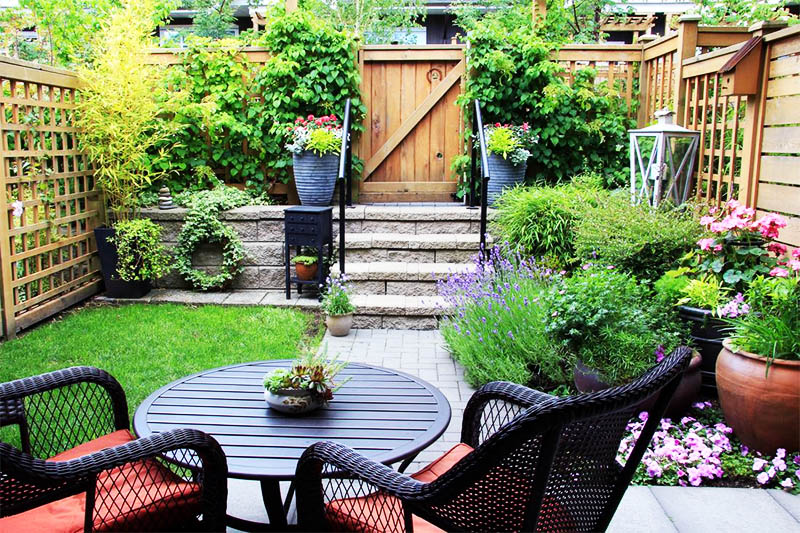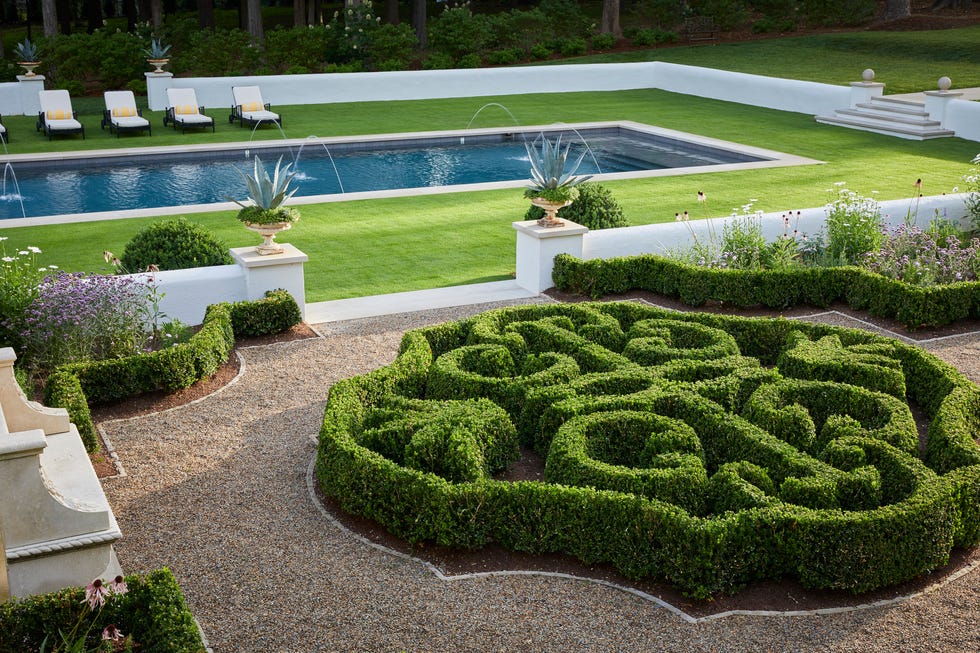Why Retaining Wall Installation Is Essential for Slope Stability
Wiki Article
Exploring Different Kinds of Landscape Design to Enhance Your Outdoor Atmosphere
Landscaping plays an essential duty in specifying exterior areas. Different styles, from conventional gardens to modern-day minimalist styles, provide distinct advantages for improving appearances and function. Including elements like xeriscaping and native plants can contribute to ecological balance. Recognizing the interaction of hardscape and softscape is crucial for creating inviting atmospheres. The options available can be overwhelming, prompting one to assess which style finest lines up with their vision for an outdoor haven.Conventional Yard Landscape Design

While numerous modern gardens embrace minimalism and native growings, conventional yard landscape design continues to be a cherished approach that stresses balance, framework, and decorative attributes. This design often incorporates official geometric formats, where flowerbeds, pathways, and hedges are organized with precision. Central focal factors, such as water fountains or sculptures, draw the eye and provide a feeling of harmony.Traditional landscaping often includes a range of plant types, showcasing seasonal flowers and evergreen elements. Traditional hedges, perennials, and annuals produce dynamic shades and textures throughout the year. Additionally, trellises, arches, and pergolas include vertical rate of interest and serve as support for climbing plants, boosting the overall aesthetic.The use all-natural products, such as rock and wood, more enriches the standard landscape, contributing to a timeless high quality. Eventually, this style welcomes relaxation and satisfaction, making it a cherished choice for those seeking an attractive outdoor atmosphere.
Modern Minimalist Landscaping
Modern minimal landscaping emphasizes simpleness and performance, identified by open areas and clean lines. Secret qualities consist of a restricted plant palette and thoughtful hardscape layout that focuses on functionality and aesthetic charm. Reliable plant choice techniques better enhance the minimalist strategy, developing peaceful exterior atmospheres that urge relaxation and contemplation.Secret Characteristics of Minimalism
An expanding trend in landscaping is the accept of minimalism, defined by simpleness and performance. Minimal landscape design concentrates on tidy lines, open areas, and a limited color palette, advertising a feeling of harmony. Components are carefully curated to avoid mess, enabling each part to stand out. The use of all-natural products, such as stone and wood, enhances the organic feeling while maintaining an aesthetic equilibrium. In addition, minimalist layouts often incorporate geometric forms, which can develop aesthetic passion without overwhelming the detects. Water functions might be included, acting as focal points that enhance serenity. In general, minimalism in landscaping highlights the beauty of restraint, permitting nature's intrinsic top qualities to shine through in an unified outdoor atmosphere.Plant Option Strategies
Reliable plant selection is essential for accomplishing the preferred visual in contemporary minimal landscape design. The focus must be on simplicity, utilizing a restricted scheme of plants that complement each various other and the surrounding environment. Native plants are often suitable, as they call for less upkeep and water, promoting sustainability. Selecting species with differing elevations and structures can include aesthetic interest without overwhelming the space. Grouping plants in collections instead of spreading them enhances cohesion and strengthens the minimalist theme. Evergreen ranges can provide year-round structure, while seasonal flowers present subtle shade modifications. Ultimately, the objective is to create a peaceful outside area that symbolizes harmony and harmony through thoughtful plant options.Hardscape Design Principles
Crucial components in hardscape design substantially add to the general looks and functionality of minimalist landscaping. This style method highlights clean lines and understated materials, developing a minimalist aesthetic experience. Key elements consist of paths, patios, and retaining walls, which not only specify areas however likewise boost availability and functionality. The use of materials such as concrete, rock, and timber is prevalent, mirroring a natural yet modern aesthetic. Incorporating in proportion formats and geometric shapes even more enhances the minimal approach, enabling an unified blend with bordering greenery. Additionally, correct drainage and erosion control are essential considerations, ensuring durability and sustainability. Ultimately, effective hardscape layout works as a foundation that enhances softscape components while keeping equilibrium and simpleness in outdoor settings.
Cottage-Style Landscaping
Cottage-style landscaping uses a wonderful approach to creating welcoming outdoor areas. By including captivating plant mixes, this style promotes a sense of warmth and fancifulness. The focus on cozy, well-defined locations urges relaxation and pleasure of nature.Charming Plant Combinations
Numerous homeowners seek to develop a stunning outside room, accomplishing the appeal of cottage-style landscape design frequently pivots on thoughtful plant combinations. Vibrant blossoms, lavish foliage, and fragrant herbs can be skillfully coupled to stimulate a sense of whimsy and nostalgia. For example, incorporating lavender, daisies, and foxgloves creates a vivid tapestry that draws in pollinators while offering a fascinating scent. Integrating ornamental lawns like miscanthus can add structure and motion, enhancing the softer blossoms. Furthermore, mixing annual and seasonal plants assurances continuous color throughout the periods. The use of climbers, such as clematis or honeysuckle, can enhance upright rate of interest. On the whole, these mixes not only improve the landscape however additionally cultivate a welcoming and captivating atmosphere.
Cozy Outside Rooms
Creating cozy outdoor rooms requires a careful mix of convenience and appeal, enhancing the vivid plant mixes found in cottage-style landscape design - Bbq Island Installation. These locations usually feature welcoming seating plans, such as weathered wood benches or supported this page chairs surrounded by rich plant. Soft lighting, like fairy lights or lanterns, adds warmth, changing the space right into a relaxing resort. Incorporating elements such as trellises adorned with climbing roses or fragrant herbs boosts sensory experiences. In addition, paths constructed from rustic rocks invite exploration and connection with nature. Decorative touches like birdbaths or whimsical garden art add to a sense of fancifulness. Eventually, the objective is to create a charming ambience that urges leisure and enjoyment of the appeal bordering these relaxing exterior sanctuariesXeriscaping for Water Conservation
How can areas balance aesthetic landscape design with the pushing need for water preservation? Xeriscaping becomes a feasible solution, advertising sustainable practices that lessen water usage while boosting outdoor beauty. This landscaping technique focuses on making use of drought-resistant plants belonging to the area, which call for substantially less water than typical yards. By incorporating compost and effective watering systems, xeriscaping minimizes evaporation and drainage, additional preserving priceless water resources.Communities can create visually attractive landscapes through cautious preparation, selecting a diverse array of structures and shades that flourish in arid problems. In addition, xeriscaping urges making use of decorative rocks and ornamental crushed rock, offering practical and appealing choices to turf yards. As areas welcome this eco-friendly approach, they not just lower their water usage yet likewise promote biodiversity and strength in their neighborhood environments. Eventually, xeriscaping acts as a demo of the harmony between aesthetic appeal and environmental obligation.Hardscape Style Elements
Hardscape design components play a crucial role in improving outside spaces by providing framework and capability. These non-plant functions, such as patios, walls, decks, and walkways, create visual rate of interest while offering sensible objectives. Using materials like stone, block, and concrete, hardscaping adds to the total visual appeal and sturdiness of a landscape.Incorporating hardscape aspects can define areas within a backyard, guiding movement and urging social interaction. As an example, a well-placed pathway can attach different areas of the yard, while retaining walls can manage elevation adjustments and stop erosion.Furthermore, hardscape style can boost access and security, giving secure surface areas for lounging or walking. Efficient integration of hardscape parts enhances soft landscaping, ensuring a well balanced outdoor environment. Ultimately, thoughtful hardscape design enhances not only the appeal of outside areas however additionally their use, making them a lot more welcoming and useful for homeowners and site visitors alike.Outdoor Living Areas
While exterior living areas supply a smooth mix of convenience and nature, they act as essential extensions of a home, enhancing lifestyle and recreation. These areas can consist of outdoor patios, decks, or outdoor cooking areas, created to cultivate leisure and amusement. Bbq Island Installation. By incorporating useful furniture and stylish style, house owners develop inviting atmospheres for events or peaceful evenings.The assimilation of shade structures, such as pergolas or awnings, safeguards against the components while keeping an open feeling. Fire pits and exterior heating units extend usability next into cooler months, supplying heat and atmosphere. Additionally, including lights attributes improves the space's use after sunset, developing a magical evening atmosphere.Landscaping components, such as borders and pathways, additionally define these locations, directing motion and adding visual appeal. Ultimately, exterior home transform yards into flexible hideaways, advertising a way of life that welcomes both nature and comfortNative Plant Landscaping
Native plant landscape design emphasizes the use of indigenous plants to produce lasting and harmonious outdoor atmospheres. This strategy not just boosts biodiversity but also preserves water and decreases the need for chemical plant foods and pesticides. By picking plants that are belonging to a certain area, homeowners can guarantee that their landscapes are well-adapted to neighborhood soil and climate problems, resulting in reduced maintenance requirements.Additionally, indigenous plants supply vital environments for neighborhood wildlife, consisting of bees, butterflies, and birds, advertising environmental health and wellness. Landscape designs that integrate these plants often feature naturalistic formats that imitate neighborhood ecological communities, cultivating a feeling of location and link to the environment.Furthermore, native plant landscape design can add to dirt stability and web disintegration control, making it an environmentally liable choice. In general, this method not only enhances exterior rooms but likewise sustains the regional environment, creating a lasting balance in between human activity and nature.
Frequently Asked Inquiries
How Can I Select the Right Landscape Design Design for My Home?
Choosing the right landscape design style for a home entails examining the residential property's architecture, climate, and personal choices. Outdoor Lighting Installer. Researching different designs and seeking advice from experts can supply guidance to produce an unified outside room tailored to private demandsWhat Is the Ordinary Cost of Professional Landscaping Solutions?
The average expense of specialist landscape design solutions usually varies from $1,000 to $5,000, depending upon job complexity, size, and location. Homeowners need to take into consideration obtaining numerous quotes to assure they obtain fair prices and top quality service.Exactly how Frequently Should I Maintain My Designed Lawn?
The frequency of preserving a landscaped yard generally depends on the features and plants existing. Typically, routine maintenance every few weeks is recommended, with seasonal jobs raising in regularity during optimal growing periods for suitable wellness and appearances.Are There Landscaping Options for Tiny Urban Spaces?

Different landscape design choices exist for tiny city spaces, including vertical yards, container plants, and roof gardens. Integrating these aspects can take full advantage of limited areas while giving greenery, improving visual appeals, and improving air top quality in city atmospheres.
What Plant kingdom Are Finest for Bring In Neighborhood Wildlife?
The best plants for attracting local wild animals consist of native flowering varieties, berry-producing hedges, and varied grasses. These plants give vital food and habitat, cultivating a prospering ecosystem that sustains various birds, insects, and little creatures. Lots of homeowners seek to create a picturesque outside area, achieving the appeal of cottage-style landscaping frequently pivots on thoughtful plant mixes. Producing comfy outside spaces calls for a cautious blend of comfort and appeal, enhancing the dynamic plant combinations found in cottage-style landscape design. Indigenous plant landscape design emphasizes the usage of aboriginal plants to develop unified and sustainable outside settings. Landscape develops that incorporate these plants often include naturalistic layouts that mimic local communities, cultivating a feeling of area and connection to the environment.Furthermore, indigenous plant landscaping can contribute to soil stability and disintegration control, making it an eco responsible option. Numerous landscaping options exist for tiny urban rooms, consisting of vertical gardens, container plants, and roof gardens.Report this wiki page